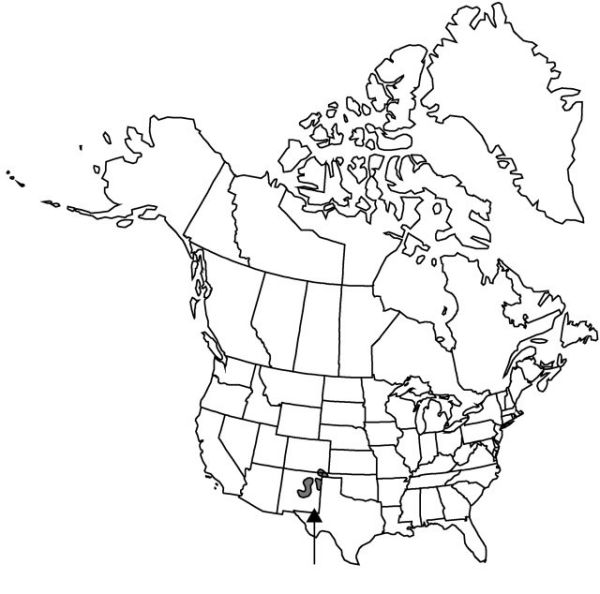Nolina greenei
Proc. Amer. Philos. Soc. 50: 418. 1911.
Plants acaulescent, cespitose; rosettes from vertical, subterranean, branched caudices. Leaf blades wiry, stiff or slightly lax, concavo-convex, 45–90(–110) cm × (4–)5–8 mm, not glaucous; margins remotely serrulate with close-set, cartilaginous teeth, or sometimes entire; apex lacerate; scape and inflorescence leaf blades curling, 10–40 cm. Scape curling, 0.5–2 dm. Inflorescences paniculate, (3–)3.5–6(–6.5) dm × 8–14(–20) cm; bracts persistent, lower bracts to 40 cm; bractlets 2–5 mm, apex lacerate. Flowers: tepals white, sometimes with purple midveins, 2.2–3.3 mm, margins hyaline; pedicel erect, proximal to joint 1–1.5 mm, distal to joint 2.5–4.5 mm. Capsules hyaline, thin-walled, inflated, 2.1–3.8 × 3.8–5.2 mm, distinctly notched distally. Seeds becoming bronze with red tinge, rounded, bursting ovary walls, 3–3.9 mm diam.
Phenology: Flowering mid–late spring.
Habitat: Rocky, limestone hillsides, volcanic flows, open juniper-pinyon pine-oak woodlands and adjacent grasslands
Elevation: 1200–1900 m
Distribution

Colo., N.Mex., Okla.
Discussion
Nolina greenei is resurrected for the plants of Nolina that occur from central New Mexico north to the Black Mesa region of Oklahoma and just into southeastern Colorado. They are similar to N. texana with respect to the inflorescence contained within the leaves, persistent elongated bracts, and seeds that burst the ovary wall and remain attached. They differ primarily in their broader, slightly serrulate leaves (although some leaves may be entire), copper-colored seeds, and an open woodland-grassland habitat.
Selected References
None.